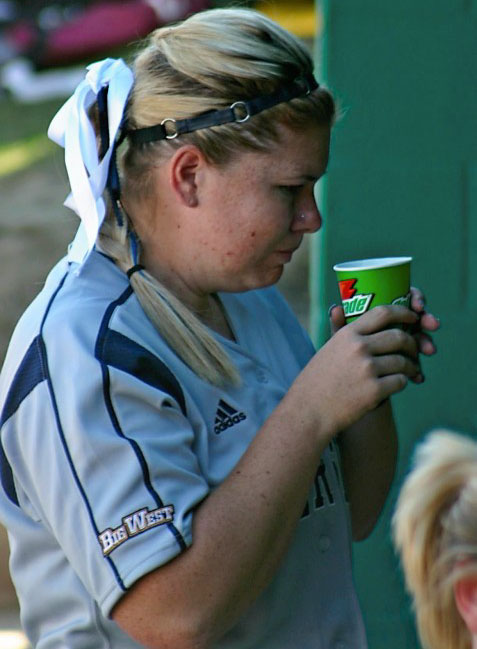The following Guest Blog post was written by Amanda, runner-up in our Weight Loss Success Story competition, in honor of Childhood Obesity Awareness Month.

Amanda struggled with her weight since childhood. She received a full athletic scholarship to play softball in college. Despite all of this, Amanda continued to gain weight. She was teased and berated by her coaches, teammates, and male athletes on campus who called her “Amazon Amanda” and a “glazed ham” when she sweat while working out.
Unfortunately, the percentage of teenage obesity in the United States is on the rise with 20% of children (6-11 years old) and 18% of teens (12-19 years old) being classified as obese as of 2008. These sad numbers are said to be caused by the popularity of fast and processed food along with an apathetic attitude towards exercise. This does not account for those with health issues such as thyroid disease. With foundations and groups throwing money at the problem to encourage healthy eating and exercise, I believe that the causes of teenage obesity are far more complex than just telling kids to get off the couch and eat their daily serving of vegetables. Yes, this definitely helps, but it is just the tip of the iceberg. The foundations and groups are not addressing why children are not eating healthfully or choosing sedentary activities over being active.
In a society that values speed and efficiency, fast food always seems a desirable and, often, a necessary way to handle children’s hunger. With children eating lunch around 11:30 am and getting out of school around 3:00 pm, without a snack in between, children are starving in the time between when they are out of school and when they are being taken to piano lessons, baseball practice, or girl scouts. Parents that are driving from work to pick up their children are not able to always have celery sticks or perfectly-measured out portions of fruit. They take them to McDonald’s on the way to their next engagement. Many people blame the parents. I believe that if school’s revamped their nutritional schedule, offering children healthy snacks at intervals throughout the day and a lunch with sustainable proteins, children would be less likely to “need” that fast food “snack” at 3:00 pm.
Starting this at an early age would promote an affinity towards the healthy option. Because, let’s face it, a Big Mac tastes way better than an apple with almond butter. The trick is to make the Big Mac a treat and the apple the norm.
Forcing the apple on an overweight child causes them to associate the apple with negativity, hunger, and guilty longing for tastier foods. The same can be said for exercise. If a child is only forced to exercise because they are overweight, the child will always regard exercise as something that is not fun. This is a tough feeling to overcome. Ask any ex-overweight friend or someone who is struggling with their weight and they will tell you that it is the hardest thing to learn to “like exercise” especially as the only reason that they are doing it is to lose weight. That kind of exercise is hardly “fun.” It’s slaving away on the elliptical at the gym, after work when you are starving and wishing you were anywhere but there. I believe that if a healthy relationship with exercise is created at a young age, as we grow up we will gravitate more towards working out for pleasure.
Now, don’t get me wrong, being thin is not that easy. I was always a “big” girl compared to my peers. I worked out frequently especially as I aged. I earned a full athletic college scholarship where workouts—from practice to weight lifting and conditioning—were daily. My parents did not buy me fast food frequently and they did not cook fattening food. Yet, I continued to gain weight.
I directly attribute my weight problems with my hatred of “exercise for weight loss” and my portion control. When I was very young, my father told me that I needed to lose weight. So, at 7 I was running laps around our neighborhood—not because I wanted to—but because I was forced to. In fact, I used to go around the corner from my house, sit on a bench, wait the appropriate amount of time and then jog home huffing and puffing like I had really completed my run. One time my dad spied on me. Whoops! These feelings towards exercise made me reluctant to do anything, but the bare minimum to be successful at my sport.
During school I remember always feeling hungry and staring at food left on other people’s lunch tray. Not wanting to look like a “pig,” I never asked for their scraps, but I did go home ravenous. I would try to come home and eat a somewhat healthy after-school snack. The problem was that I would eat the healthy snack but while sneaking handfuls of chips or cheese. Then I would feel guilty. The guilt would make me feel bad about myself and then upset at the injustice of the world. How could all of my skinny friends eat more than me, with extra sour cream on their burrito, and they could remain so thin? The anger caused me to feel comfortable in the fact that I ate less than them and, therefore, I was okay. Turns out there’s a little thing called metabolism and I seemed to not have a very fast one.
If I could go back in time, or, better yet, when I raise my own children I will try very hard to instill exercise for fun. That way, my children won’t have to resort to “fun exercise” (think Zumba, piloxing, or stripper workouts) just to lose weight. Being active because it is associated with good feelings rather than negative may be the start of a long term healthy lifestyle. This practice paired with growing up eating healthfully may allow my children and the children of the world to start off their weight on a better foot than our generations who only workout and eat healthy when our fat backs are up against a wall.





